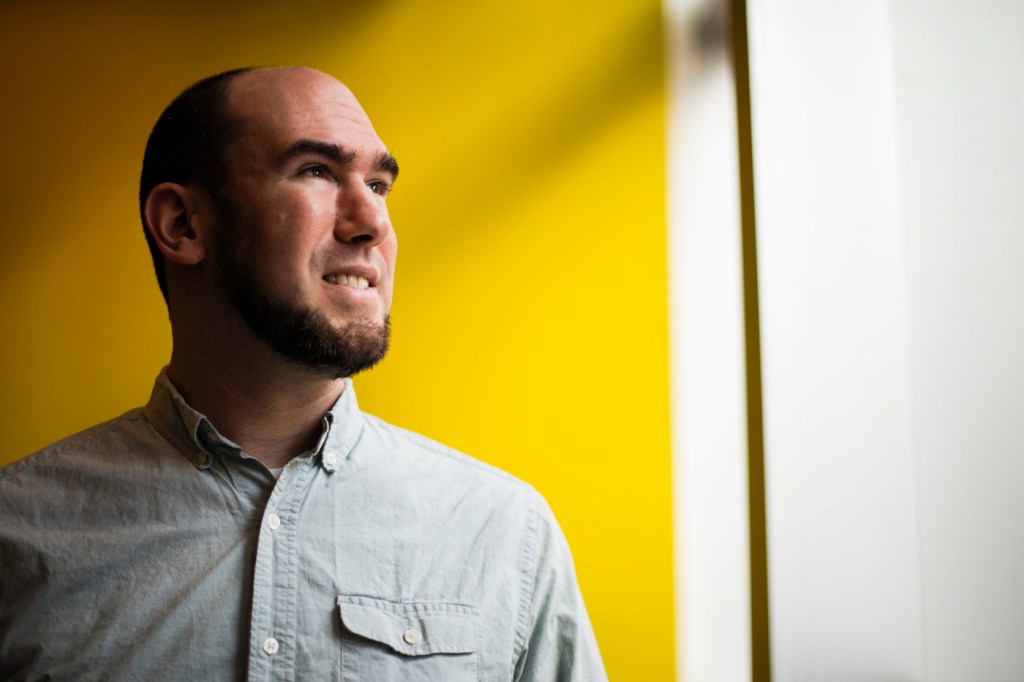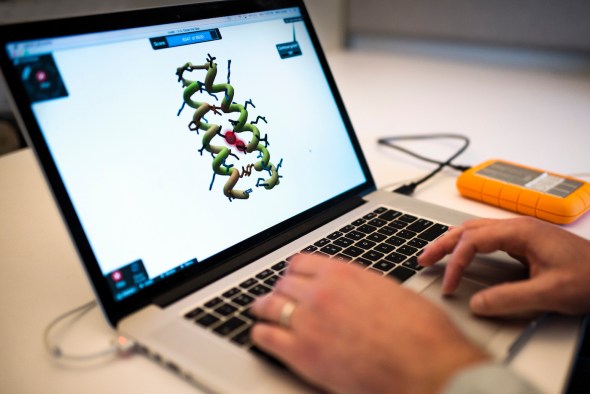On professor’s gaming platform, users solve puzzles to save lives

Nearly 82 million U.S. households have a member who plays three or more hours of video games per week. For the most part, these games are purely for entertainment. But what if we could harness all that brainpower to solve a real-world problem—perhaps a life threatening problem? That’s the goal of Foldit, an online gaming platform that allows users to design new protein structures by solving puzzles that are akin to “3-D Tetris.”
The game is fun, but it’s also a form of citizen science. The protein structures that players design will hopefully solve a problem that afflicts developing countries all over the world—aflatoxin. This naturally-occurring fungal toxin contaminates staple crops like corn and grains. Many communities don’t have the means to detect aflatoxin, and exposure can lead to liver failure or cancer. Scientists think aflatoxin is directly responsible for about one-fourth of liver cancer cases globally.
Seth Cooper, assistant professor in the College of Computer and Information Science at Northeastern, is part of the team that developed Foldit. Here’s how it works: Players start out with the basic shape of an existing protein. Then, they begin changing the atomic or molecular structure by adding or removing pieces, observing how the protein fits and interacts with the aflatoxin molecule. The ultimate objective is to find a protein that neutralizes the toxin so it’s no longer dangerous to humans.
“The game is a way to combine humans and computers to solve problems that neither humans nor computers would be able to solve alone,” said Cooper, a pioneer of the field of scientific discovery games.

Players of Foldit start out with the basic shape of an existing protein. Then, they begin changing the atomic or molecular structure by adding or removing pieces, observing how the protein fits and interacts with the aflatoxin molecule. The ultimate objective is to find a protein that neutralizes aflatoxin so it’s no longer dangerous to humans.
Photo by Adam Glanzman/Northeastern University
Players compete to build the best protein structures. Biochemists take the most promising options and use synthetic biology to create and test them in the lab. Several hundred people have played the current version of Foldit with aflatoxin puzzles, but more than half a million have tried it since the platform’s inception about 10 years ago. Before aflatoxin, scientists used Foldit to crowdsource another problem—solving the structure of a protein involved in the Mason–Pfizer virus, which causes AIDS in monkeys. Players created models that could lead to the design of new antiretroviral drugs.
The current Foldit project is a collaboration among Northeastern, the University of California, Davis, Mars Inc., the University of Washington, and Thermo Fisher Scientific. Cooper has found that players are interested in the gaming and community aspects, but many are also motivated by the science. “It’s a way to let people get involved with something they’re interested in, but didn’t have a way to contribute,” he said.





